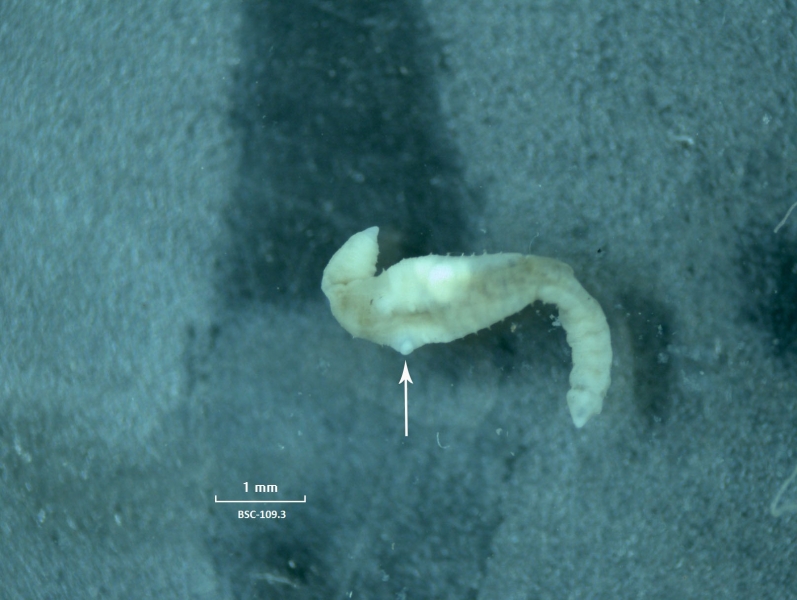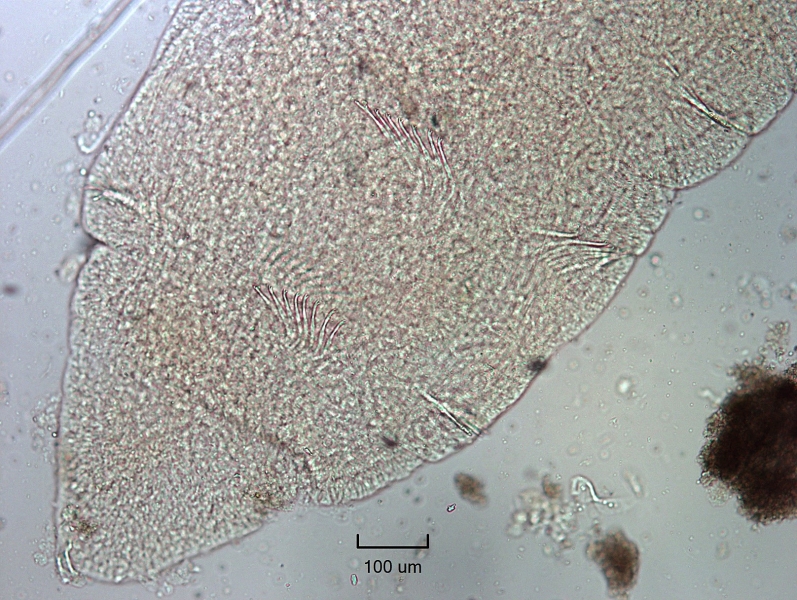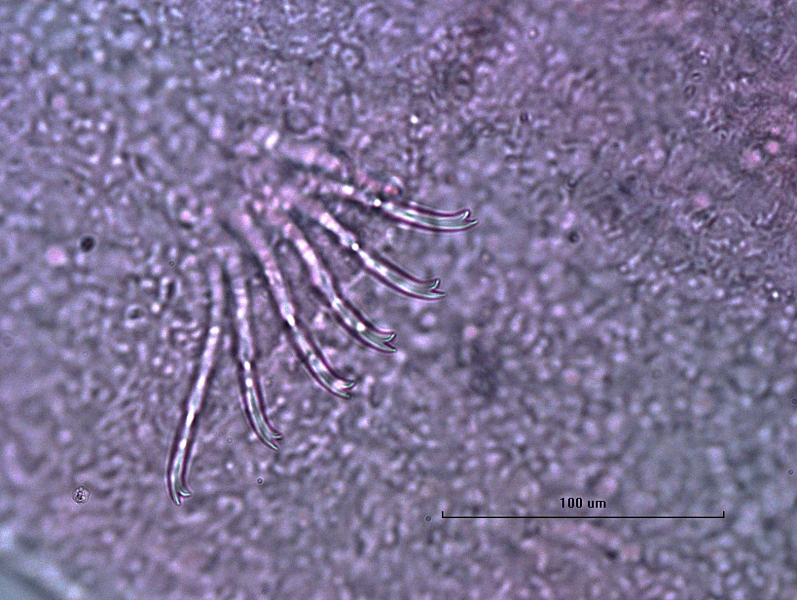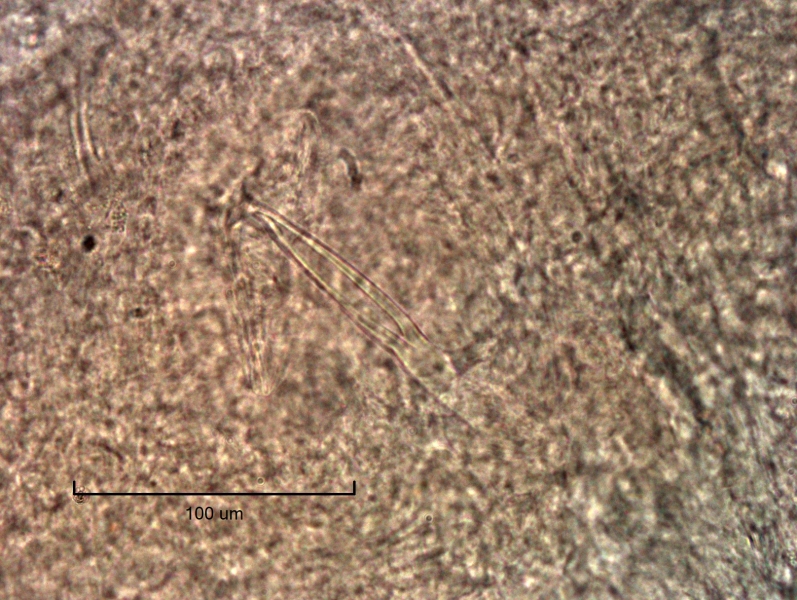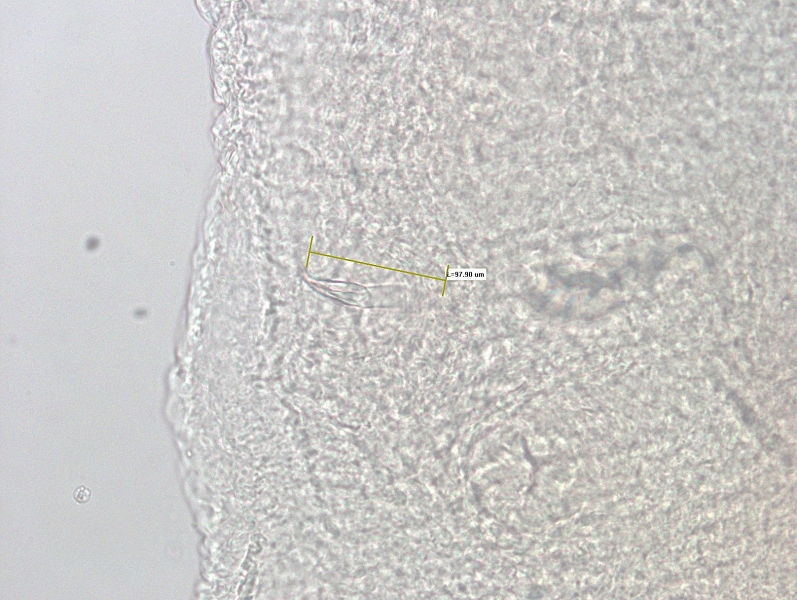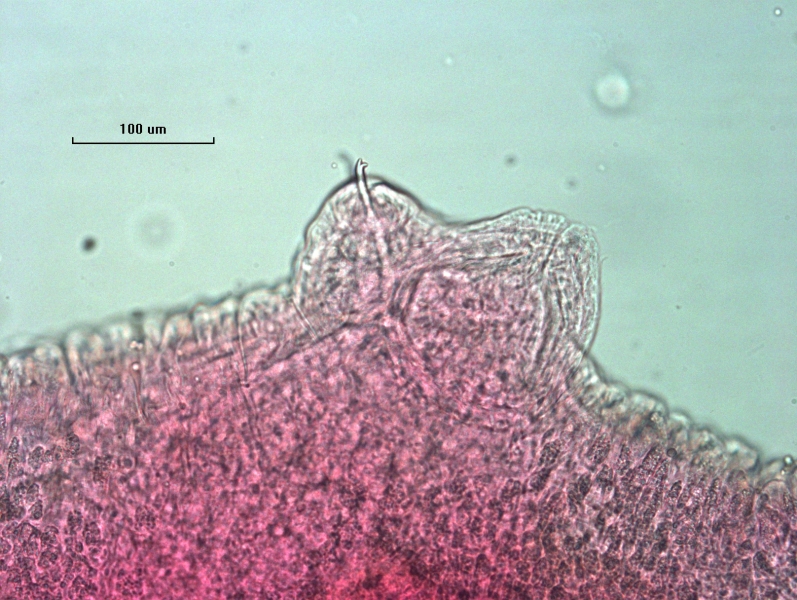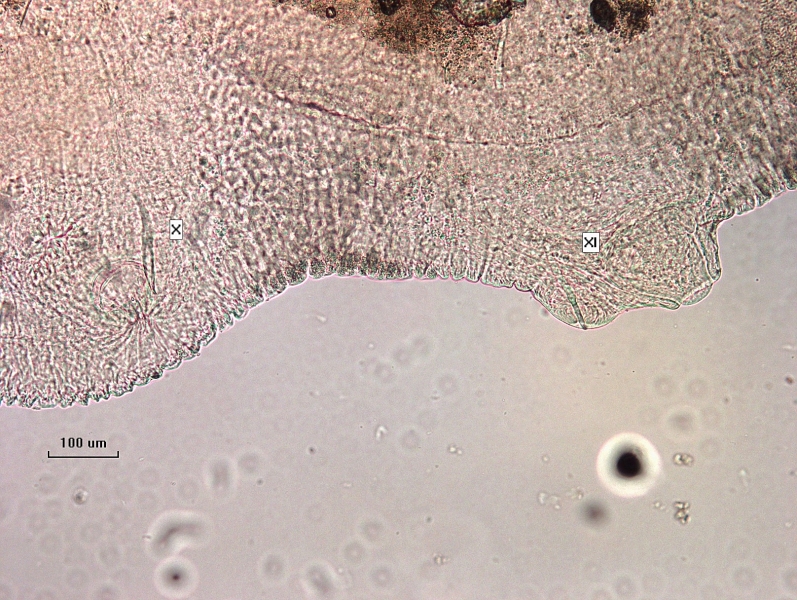Potamothrix moldaviensis
Taxa description
Potamothrix moldaviensis Vejdovský and Mrázek, 1902 is a freshwater oligochaete worm that is common and sometimes abundant in the Great Lakes. It is a tubificid worm with bifid dorsal and ventral chaetae beginning in II. When mature, it has spermathecal chaetae on X and eversible penes in XI. There are up to 9 bifid chaetae per bundle anteriorly and may be less posteriorly. The spermathecal chaetae are large and long, with elongate teeth that form a trough-shaped distal end that is hollow, although the shape may vary with the degree of maturity. Penes without penis sheaths are on IX, often everted, associated with normal ventral chaetae. P. moldaviensis is the only species of Potamothrix without hair chaetae.
Distinguishing features
P. moldaviensis is identified by having all bifid chaetae, spermathecal chaetae on X, and eversible penes on XI.
Habitat
It is often found in mesotrophic habitats with Potamothrix vejdovskyi.
Lake occurrence
Lakes Erie, Huron, Michigan, and Ontario.
Similar species
Without the presence of reproductive features, many tubificid worm species can only be identified as “immature tubificid with or without hair.” P. moldaviensis is mostly likely to be confused with Isochaetides freyi, which is another tubificid without hair chaetae, all bifid chaetae, and spermathecal chaetae on X. However, I. freyi has very long, thin, and parallel-sided spermathecal chaetae and short cuticular penis sheaths with reflexed hoods, instead of a large, trough-shaped spermathecal chaetae and eversible penes. The chaetae of I. freyi are also relatively short with short teeth, so the chaetae of P. moldaviensis will probably appear longer, with longer, more divergent teeth.
There is also the possibility that inexperienced taxonomists might confuse Stylodrilus heringianus with P. moldaviensis since they both have penes sticking out of the body wall and S. heringianus is often identified while sorting, so it is not mounted. S. heringianus has permanently everted penes that are long and tapered, without associated spermathecal chaetae. It is a lumbriculid worm with 2 minutely bifid chaetae per bundle with the upper tooth much shorter and thinner than the lower. P. moldaviensis has eversible penes that may or may not be everted, but if they do protrude, they protrude from a thickened clitellum and are shorter and less slender than those of S. heringianus. P. moldaviensis has many more chaetae per bundle, all of which are distinctly bifid.
Relative size
P. moldaviensis is a large freshwater oligochaete.
Does it have a barcode reference from the Great Lakes?
Yes, this species does have a barcode reference from the Great Lakes.
References
Kathman, R.D., and R.O. Brinkhurst. 1998. Guide to Freshwater Oligochaetes of North America. pp. 150–151, 130, 146–147, 232–233.
Stimpson, K.S., D.J. Klemm, and J.K. Hiltunen. 1982. A Guide to the Freshwater Tubificidae (Annelida: Clitellata: Oligochaeta) of North America. pp. 34, 49.


